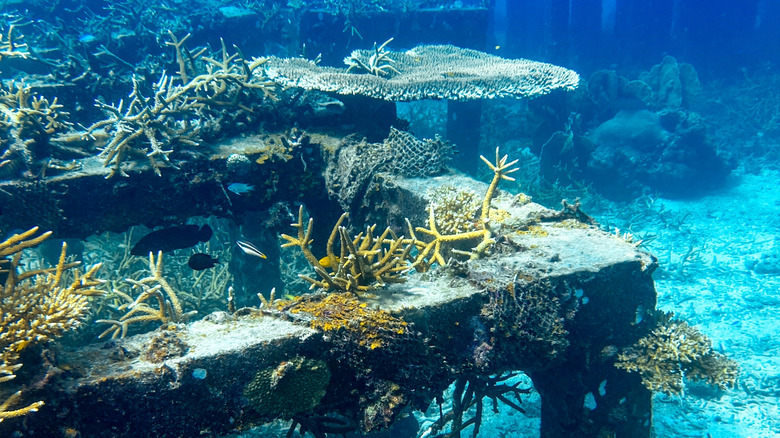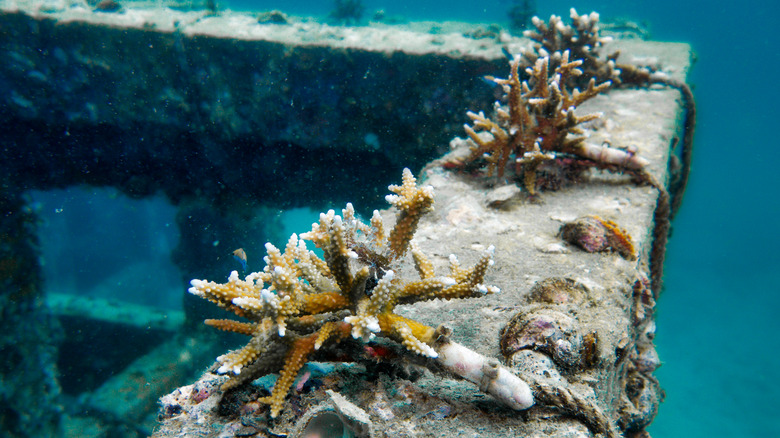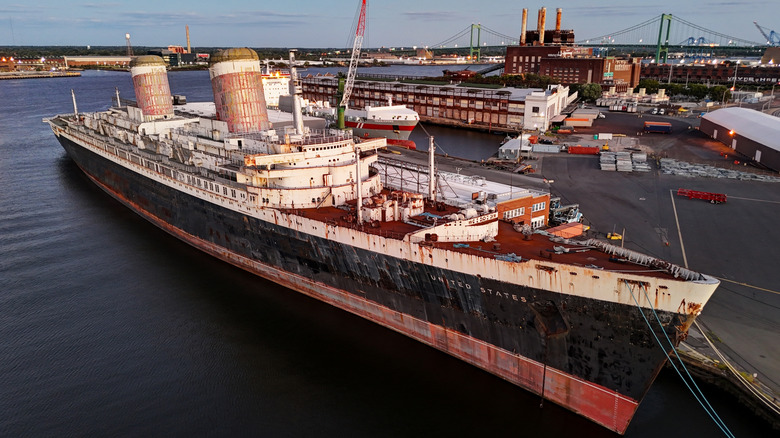What Is An Artificial Reef?
Pollution and rising sea surface temperatures are decimating the world's coral reef populations. According to a 2020 Global Coral Reef Monitoring Network report, the world's oceans lost roughly 14% of their coral reefs between 2009 and 2018. In recent news, marine ecosystems are experiencing the largest bleaching event in recorded history, as roughly 84% of the world's reefs experienced heat-related bleaching. This vastly outpaces previous bleaching events in 1998, 2010, and 2014, which saw 21%, 37%, and 68% of global reefs impacted, respectively. The disaster has made coral reefs the first environment to reach an environmental tipping point. Such losses are catastrophic for the biodiversity of global marine ecosystems, as reefs house 25% of all marine life and over 4,000 species of fish.
Like all environmental disasters, the impact extends into human-centric problems, prompting the decision to use sunken, man-made structures to create artificial reefs. According to the Environmental Protection Agency, reefs are also a critical economic asset, producing nearly $30 billion in yearly economic benefits, given that they're essential for global fisheries and offer billions of dollars a year in coastal protection from storms, tsunamis, floods, and erosion. The U.S. Air force has even begun deploying self-healing concrete reefs to protect military bases from hurricanes and tidal surges.
As ocean temperatures continue to rise, scientists are hunting for new means of repopulating our ocean's reef populations, as reef restoration becomes an increasingly critical piece of the environmental puzzle. One means of helping our reef populations is through man-made structures, supplementing the loss of coral with sunken ships, aircraft carriers, and even oil rigs. By providing hard substrates and vertical reliefs for coral to latch onto, artificial reefs present a stable environment for reef populations to flourish.
Understanding artificial reefs
The easiest way to understand how an artificial reef functions is to visualize any movie where scuba divers have explored a shipwreck, swimming through colonies of marine life that've moved onto the ship's decks and hulls like ants swarming on an abandoned picnic. Typically, large steel structures are ideal candidates for artificial reefs, as they provide large swaths of surface area for marine life to fasten themselves onto while being heavy and sturdy enough to withstand strong currents and storms. These structures have constituted the world's largest artificial reefs, including the USS Oriskany. Located 24 miles off the coast of Florida at the edge of the Gulf Stream, the 32,000-ton warship was converted into an artificial reef in 2006. Concrete structures, mineral accretion devices like electrified Biorock, and steel rebar are also adequate reef structure materials.
Some scientists see artificial reefs as addressing the symptoms of climate change without fixing the underlying issues threatening our marine populations. Others have criticized the manner in which the solution has been pursued. For instance, some early adopters transformed artificial reefs into a convenient means of trash disposal, dumping toxic materials, industrial scrap, and construction waste into the ocean. These materials proved poor replacements for coral reefs, as small, unsecured structures like cinder blocks or tires were easily disrupted by poor weather. Luckily, this haphazard approach was largely a function of the practice's early days and has since been replaced by more carefully curated designs. Finding stable, long term reef solutions is increasingly important as some of the world's largest barrier reefs face catastrophic bleaching levels.
The past and future of artificial reefs
Humans have observed this phenomenon since the earliest days of sailing. Japanese fishermen have harnessed this knowledge since the 1700s, building artificial reefs to boost fishing populations. In the United States, the state government of Hawai'i has planted artificial sea shelters to boost its natural marine habitat since the 1960s, while California first established its artificial reef program in 1985. One program has sought to use artificial reefs to solve another pressing question: what to do with decommissioned oil rigs. As it happens, the legs of oil rigs become artificial reefs while in use, transforming them into productive additions to marine environments that are sometimes harmful to remove. As such, some have pressed to convert old rigs into reefs, either by leaving the base in the ocean or bringing the rest of the decommissioned structure down onto the ocean floor. Since the 1980s, the U.S. has used this method to convert over 600 oil platforms on its outer continental shelf.
Later this year, a historic ocean liner is set to claim the title of the world's largest artificial reef when the SS United States sinks roughly 20 nautical miles off the coast of Destin-Fort Walton Beach, Florida. That's not even the first time this ship will have made history, though. Constructed as ship engineering hit an all-time high following World War II and 990 feet long, the once luxury ship set the trans-Atlantic speed record in 1952 – a record that is still standing. Now, the shipping world's greatest technological marvel will sit 180 feet below the Gulf's surface, where divers will have the chance to explore what will surely be a wondrous marine ecosystem.


